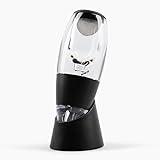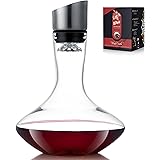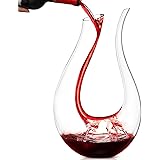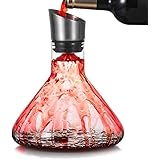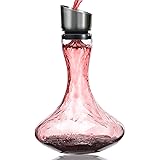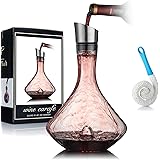The world of food and wine pairing can often feel like a secret language, full of intimidating rules and esoteric terminology. Many enthusiasts find themselves hesitant, unsure of how to truly elevate their dining experience by selecting the perfect bottle. However, this challenge is not insurmountable. As beautifully demonstrated in the accompanying video featuring wine expert Christina Rasmussen, co-founder of Little Wine, a harmonious food and wine pairing is a truly heavenly experience, and it is a skill that can be learned and enjoyed by everyone. This guide aims to demystify the art of pairing, drawing insights from the video and expanding on concepts, particularly focusing on the innovative world of Vin de France wines.
Demystifying Food and Wine Pairing: Your Culinary Journey Begins
The journey to mastering exquisite food and wine pairing does not need to be overly complicated. Essentially, the goal is to create a synergy where the flavors of both the dish and the wine are amplified, with neither overpowering the other. It is often believed that wines must adhere to strict regional guidelines for a successful match. However, with labels like Vin de France, winemakers are empowered to innovate, offering us a broader spectrum of tastes and styles for our culinary experiments.
What are Vin de France Wines? Creative Freedom in Every Bottle
The Vin de France category represents a refreshing departure from traditional French wine regulations. This label was established to grant winemakers the freedom to be creative and innovative, unencumbered by the strict rules often associated with specific regions or appellations. It is a category where the focus is shifted to grape varieties and taste, ensuring that quality is maintained while innovation is encouraged. This approach provides everyday wine drinkers with exceptional quality and access to diverse wine expertise in the simplest of ways, making the world of French wine more approachable.
Furthermore, Vin de France wines are also noted for their adaptability in the face of modern challenges, such as climate change. A winemaker might, for instance, face crop loss in one region; however, under the Vin de France designation, grapes can be sourced from another French region. This flexibility ensures continuity and allows for continued creativity, provided the grapes are French and the wine is made in France. These “hipsters” of the wine world, as Mike aptly describes them in the video, are indeed the artists, consistently crafting delightful and distinctive selections.
White Wine Pairing Principles: From Zesty to Creamy
When it comes to white wine pairing, understanding the wine’s inherent characteristics is paramount. Two prominent examples, Sauvignon Blanc and Chardonnay, offer distinct experiences that lend themselves to different food profiles.
The Zesty Appeal of Sauvignon Blanc: A Classic Wine Pairing
Sauvignon Blanc is often characterized by its vibrant acidity and fresh, zingy profile. As tasted in the video, the 2021 Le Zeitgeist Sauvignon Blanc exemplifies these qualities. The primary aromas detected, such as apple, gooseberry, and a grassy element, are directly derived from the grape fruit itself, not from winemaking processes or aging. These are flavors literally picked from the vine.
A classic principle in food and wine pairing is “what grows together goes together.” This is beautifully illustrated with the pairing of Sauvignon Blanc and goat’s cheese, often served with a gooseberry chutney. The crisp acidity of the Sauvignon Blanc cuts through the richness of the goat’s cheese, while its gooseberry notes echo and amplify the flavors present in the chutney. It’s a harmonious marriage where each element enhances the other, creating a truly heavenly bite. If a wine is noticed to have bright citrus or berry notes, it is often complementary to dishes with similar flavor components.
The Creamy Comfort of Chardonnay: The Versatile Wine Pairing Default
In stark contrast to the lively acidity of Sauvignon Blanc, Chardonnay can offer a profoundly different experience, often described as creamy and buttery. The 2021 Le Champ des Etoiles Chardonnay, for example, achieves this through specific winemaking techniques, notably malolactic fermentation. This process involves the conversion of malic acid, the crisp, appley acid found in the first wine, into lactic acid, which is the same smooth acid found in dairy products like cheese and milk.
This malolactic fermentation, along with the subtle use of oak, imparts secondary characteristics to the Chardonnay, such as a gentle toastiness, a touch of spice, and even hints of vanilla. When this rich Chardonnay is paired with a savory dish like a croque madame, featuring French cheeses, jambon, and a quail’s egg pan-fried in butter, a remarkable transformation occurs. The savory elements of the food draw out a deeper, more complex savory character in the wine, creating a wonderfully balanced and comforting experience. This versatility is why Chardonnay is often recommended as a safe and reliable choice for food and wine pairing when one is unsure what wine to select.
Exploring Beyond the Expected: The Intrigue of Orange Wine
Beyond the well-known white and red categories, lies the fascinating realm of orange wine. This type of wine, as observed in the video, presents a sepia-like hue and a unique aromatic profile. Notes of oranges, bitterness reminiscent of Aperol, and even a copper taste were identified during the tasting. Orange wine is made from white grapes, but with extended skin contact during fermentation, much like red wine production. This contact gives the wine its distinctive color, as well as a more robust texture and often a phenolic bitterness. It is not sweet, as some might assume from the fruity aromas, but rather dry with complex bitter and savory undertones.
The ancient origins of orange wine are rooted in regions like Georgia, where winemaking techniques involving long maceration in Qvevri (clay vessels) have been practiced for millennia. This historical context highlights a tradition of diverse winemaking that precedes many modern classifications. The bitterness and tannic structure of orange wine make it an excellent partner for dishes that are typically challenging to pair, such as those with strong umami flavors, olives, or artichokes. The bitterness in the wine complements and balances the challenging compounds in these foods, leading to a surprisingly harmonious food and wine pairing.
Elevating Your Food and Wine Experience: A Path of Discovery
The journey of food and wine pairing is ultimately one of personal discovery. While principles like matching intensity, mirroring flavors, or utilizing contrasting elements provide a strong foundation, there is immense joy in experimenting and finding combinations that resonate with individual palates. Remember that the goal is to enhance both the culinary creation and the chosen wine, making each component shine brighter in the presence of the other. The innovative spirit of Vin de France wines particularly encourages this adventurous approach, inviting drinkers to explore new profiles and unexpected harmonies. Engaging with different grape varieties and winemaking styles, especially from a flexible category like Vin de France, ensures that exciting food and wine pairing possibilities are always at hand.


